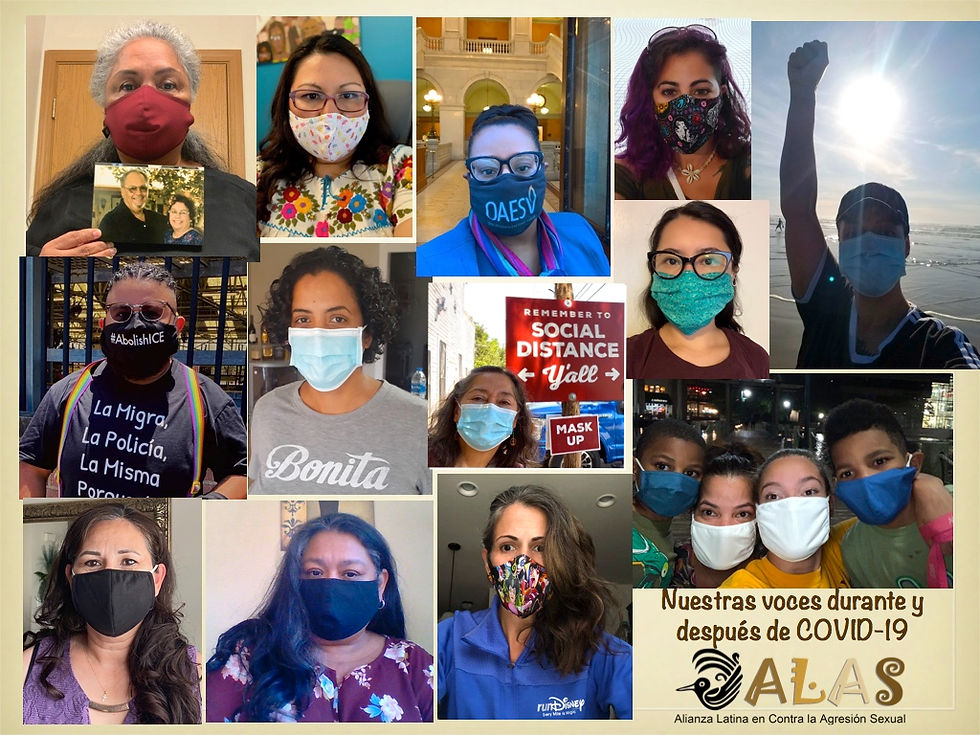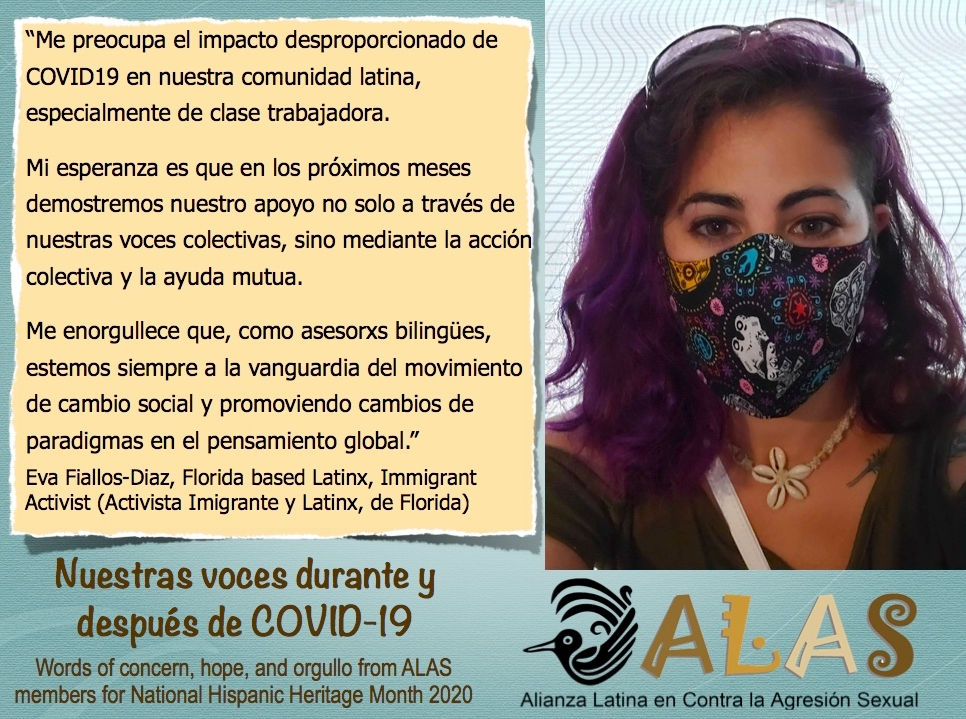Statements & Projects
This page includes access to all of the ALAS position statements that have been drafted since 2004, to promote Spanish language victim advocacy efforts and to improve the working conditions of Latin American bilingual victim advocates.

Arte Sana and ALAS members were the first to use the @ sign (subsequently replaced by the “x” and more recently the “e” as in Latine) to promote non-gendered references in Spanish when applicable) this very first position statement included the a/o ending. While the reference text may be a bit dated in some of the documents below, the essence and aspirational goals
of each statement remain relevant today.
Since its very first online collaboration for a national position statement on eliminating language barrier for Spanish-speaking victims of gender-based violence, ALAS has offered the following position statements, official letter, and campaigns to respond to issues and inform victim outreach, programming and training.
The first ALAS position statement on eliminating language barriers (2004)
Position statement in support of Latina victim advocates (2007)
Position statement for greater outreach to Latin American communities (2010)
Specific Actions for Victim Advocates & Allies to Respond to SB 1070 in Arizona (2010)
The Existe Ayuda Toolkit available on the OVC website (2011)
Position Paper Regarding Workshops in Spanish at State and National Conferences (2012)
Letter to President Obama regarding the rights of refugee children (2014)
Creation of the #YoSoySAAM campaign in 2015 and Twitter chat in 2016
Actionable Advocacy Under a new administration - en español también (2017)
ALAS voces durante y depués de la pandemia
words of concern, hope, y orgullo (2020)









Between August and September 2020, 154 advocates who mostly identify as Latina completed the ‘Bilingual Advocacy: During & After the COVID-19 Quarantine’ survey in both English and Spanish.
This graphic of the survey profile information regarding identity, the number of years in the movement,
and the geographic distribution of survey respondents.

